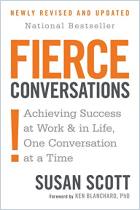Join getAbstract to access the summary!

Join getAbstract to access the summary!
Deb Bright
The Truth Doesn’t Have to Hurt
How to Use Criticism to Strengthen Relationships, Improve Performance, and Promote Change
AMACOM, 2014
What's inside?
Performance consultant Deb Bright shows you how to become more proficient at giving and even receiving criticism.
Recommendation
Performance consultant and former Olympic diving hopeful Deb Bright shows readers how to give and receive criticism. Drawing from her research on the effects of receiving criticism on workplace stress levels, and other studies about criticism, she explains how it works, how to create a workplace environment that’s conducive to feedback, how to give and take criticism, and how to avoid common mistakes as a “giver” and “receiver” of critiques. She teaches givers how to build their confidence and become more comfortable when criticizing. Receivers learn how to accept criticism as useful without becoming emotional. Bright also covers how to manage teams and cope with difficult situations. getAbstract recommends her practical, applicable advice to anyone seeking to create a workplace that embraces healthy, productive criticism.
Summary
About the Author
Deb Bright is the founder and president of Bright Enterprises, a consulting firm focused on enhancing performance.





















Comment on this summary